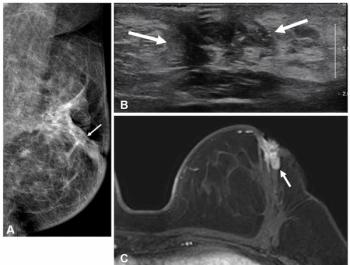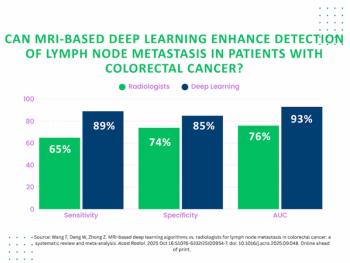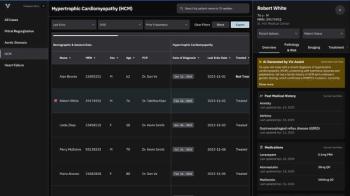
MRI of Prostate May Identify Measurable Growth
Using MRI to monitor men under active surveillance for prostate cancer may help detect measurable growth.
Changes in apparent diffusion coefficient (ADC) in prostate cancer as seen through MR imaging, may be used to identify tumors with measurable growth, according to a study published in the
Researchers from the United Kingdom performed this study to measure longitudinal change in tumor volume of the dominant intraprostatic lesion and determine whether baseline ADC and change in ADC are indicative of tumor growth in patients with prostate cancer undergoing active surveillance.
A total of 151 men with prostate cancer (mean age 68.1) participated in the study. All were undergoing active surveillance, which included 3D whole prostate, zonal, and tumor volumetric findings documented at endorectal MRI examinations performed at two time points, with a median interval of 1.9 years.
The tumor’s location was confirmed at transrectal ultrasound or template biopsy. ADC was measured on the slice with the largest lesion. Twenty randomly selected patients had the measurements repeated by the same observer after a greater than 4-month interval, and the limits of agreement of measurements were calculated. Tumor volume increases greater than the upper limit of agreement were designated measurable growth, and their baseline ADCs and change in ADC were compared with those of tumors without measurable growth.
The results showed that 52 (34.4%) tumors increased measurably in volume. Other findings included:
• Baseline ADC and tumor volume were negatively correlated
• Baseline ADC values did not differ between those with and those without measurable growth, but change in ADC was significantly different with −6.8% ± 12.3% for those with measurable growth versus 0.23% ± 10.1% for those without)
• Percentage change in tumor volume and percentage change in ADC were negatively correlated
• A 5.8% reduction in ADC indicated a measurable increase in tumor volume with 54.9% sensitivity and 77.0% specificity (AUC, 0.67)
The researchers concluded that volume increased measurably in approximately one-third of men after 2 years of active surveillance and that change in ADC may be used to identify tumors with measurable growth.
Newsletter
Stay at the forefront of radiology with the Diagnostic Imaging newsletter, delivering the latest news, clinical insights, and imaging advancements for today’s radiologists.

































